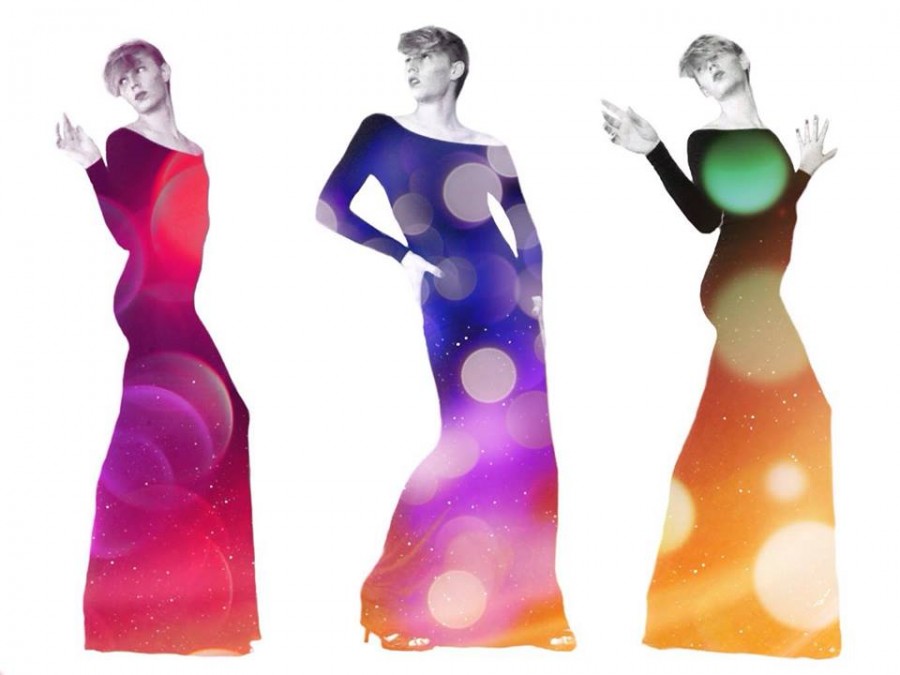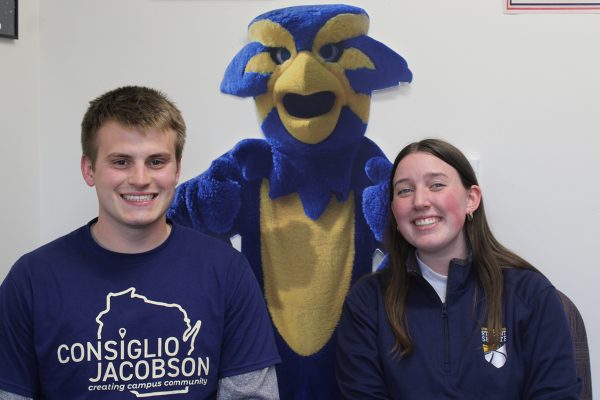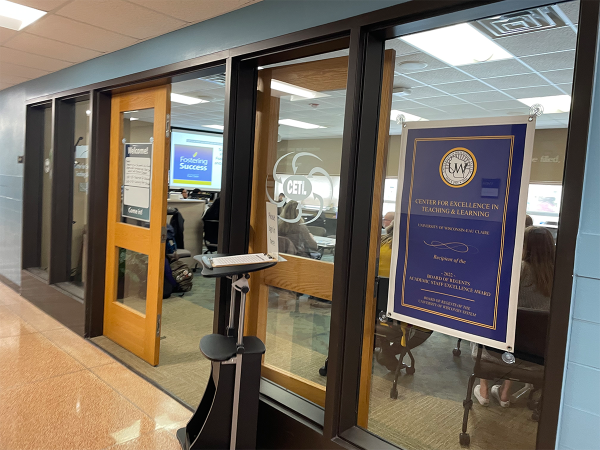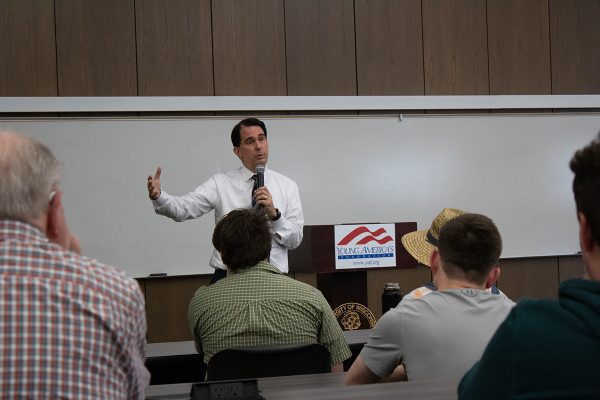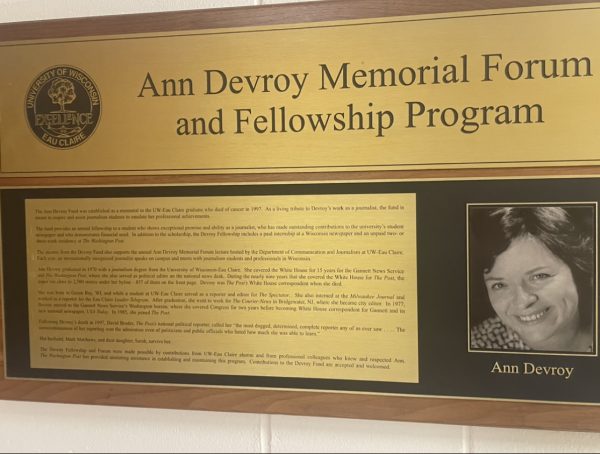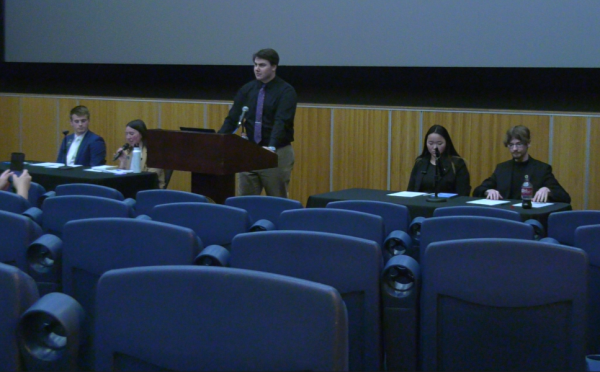UWEC student shares her story of coming out as transgender
Experts say every trans person experiences a different journey
More stories from Courtney Kueppers
Photo by SUBMITTED
Zaria Christopher, an organizational communication major, came out as transgender earlier this summer. She said she finally feels like herself.
For one UW-Eau Claire organizational communications student, childhood in southern Missouri was permeated with hardships of bullying, rejection and never fully feeling comfortable. It meant physical and verbal harassment, fear and suicide attempts.
However, three months ago that child, now 22, finally felt free. That’s when Zaria Christopher came out as a transgender woman. When shopping with a friend, Zaria slipped on a pair of size 12, six-inch stiletto heels, strutted around the store and exclaimed, “I’m getting these!”
Zaria remembers putting on her mother’s heels and makeup as a young child, and she points to sometime around her fifth birthday as when she knew her assigned sex did not match her gender identity.
But that day in the store, with a very special pair of shoes, something fell into place for her, she said.
“I was like … this is it. This is why nothing has ever clicked. This is why I have always had identity issues and never knew who I really was.”
Shortly after she phoned her identical twin brother and the words spilled out of her, “I’m transgender.” She had never said it out loud before. After coming out to her parents, other family members and close friends, Zaria posted an emotional video on Facebook on Aug. 24.
“My lie ends today. I am strong, I am courageous, I am fearless, I am a woman,” she said in her coming out video. “I can’t be the little boy I have always been … I am Zaria and Zaria is me.”
Zaria’s story is hers and hers alone. It’s hers to share and hers to live.
People who identify as transgender are a diverse community with a multitude of individual stories and desires. It’s important to understand that, said Chris Jorgenson, Women’s & LGBTQ Resource Center coordinator.
People often confuse gender and sex as the same thing, Jorgenson said. Even a present day Google search calls the terms synonyms. Jorgenson noted it’s a mistake that is perpetuated by applications that ask you to choose a gender then lists the options as “male” and “female.” Sex refers to strictly genitalia, while gender refers to how someone identifies themselves.
…
Jorgenson works to make campus even safer for underrepresented students than it was when he came out as a gay man during his undergraduate years here in the ‘90s. His efforts have led to things like:
— A policy that allows students to have their preferred name rather than their legal name on class lists and emails.
— An increasing number of “all gender” bathrooms. Jorgenson noted violence against trans people often happens in restrooms.
— A new LGBTQIA+ Resource Center that opened this fall in Davies 229.
Trans students can also access safe and understanding healthcare in Student Health Service where they can discuss hormones and hormone therapy.
Olympian and reality star Bruce Jenner came out as transgender in April and has since transitioned to Caitlyn Jenner, which started a mainstream media craze.
However, experts, like Jorgenson, said the reason celebrities like Jenner, or Laverne Cox, receive so much attention is, in part, because they meet traditional western beauty standards.
Jorgenson said members in the trans community who don’t look like Jenner or Cox are in no way less valid.
People also reacted to Jenner’s transformation by purposely using the wrong gender pronouns. Zaria is no stranger to this either, noting store clerks have gone out of their way to call her “sir.”
“It doesn’t matter if you get it, you can still respect it,” Jorgenson said. “We aren’t asking people to understand 100 percent about every other person’s identity, but when someone is telling you who they are, believe them. Because they know far more about who they are.”
…
Across the nation, as well as at home on Eau Claire’s campus, there is a push within the trans community to disseminate that it isn’t the goal of all trans men and women to “pass.”
This effort is called “trans*” and it means that transgender is an umbrella term for a community and it represents a variety of journeys.
Diane Detournay, assistant professor of women’s studies, noted often transitions are only seen as “successful” when a trans man or woman “passes.”
When in actuality, there is no definite beginning and end of a transformation. Transforming doesn’t have to mean passing for man or woman, but it can, like in the case of Jenner. It doesn’t have to mean, and often doesn’t, gender reassignment surgery.
“There has been a very narrow definition of what it means to be trans that has emerged,” Detournay said.
Zaria said it’s something that concerns her as well. She said there can be a correlation between how well you pass and how safe you are.
While she praises Eau Claire for being a great home and overall she still feels safe here, she has also received enough harassment to know she can’t walk alone.
“It’s a very valid fear,” she said. “I’d like to go out and go places by myself but I have to be safe.”
But she has a lot of strength that she draws from knowing her own self worth, she said, but also from her name.
She chose to go by Zaria after creating a character with the same name.
The fictional Zaria she wrote about in stories as a kid was everything the real Zaria now hopes to be.
In Russian, the word means sunrise and just like the word suggests,
she hopes to rise up and shine bright.

